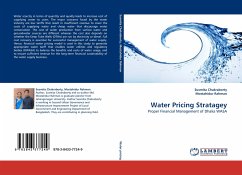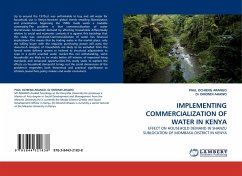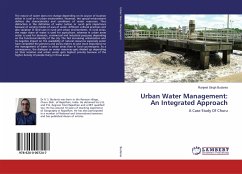Water scarcity in terms of quantity and quality leads to increase cost of supplying water to users. The major concerns faced by the water industry are low tariffs that result in insufficient revenue to cover the costs of supplying water and cheap water that discourage water conservation. The cost of water production from surface water and groundwater sources are different whereas the cost also depends on whether the Deep Tube Wells (DTWs) are run by electricity or diesel. Full cost recovery is essential for successful management of water supply. Hence, financial water pricing model is used in this study to generate appropriate water tariff that enables water utilities and regulatory bodies (DWASA) to balance the benefits and costs of water usage, and to ensure sufficient revenue for the long-term financial sustainability of the water supply business.
Bitte wählen Sie Ihr Anliegen aus.
Rechnungen
Retourenschein anfordern
Bestellstatus
Storno








